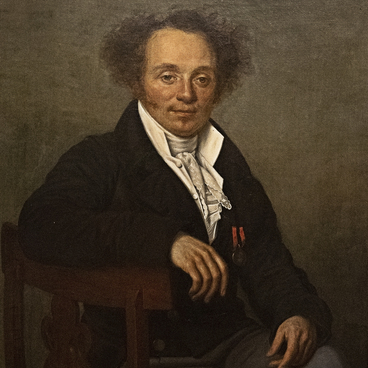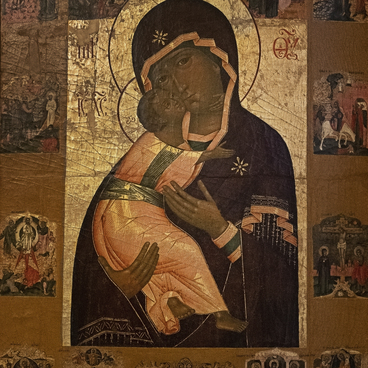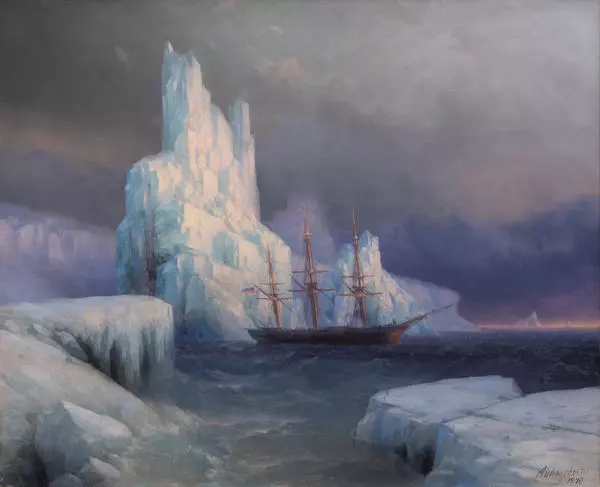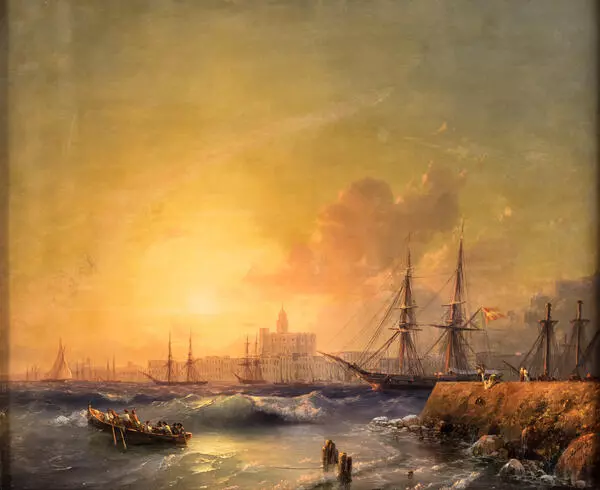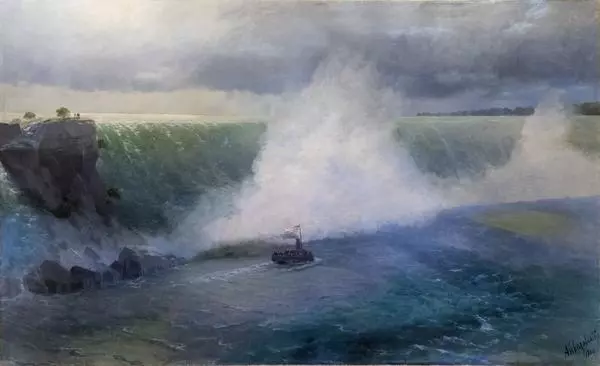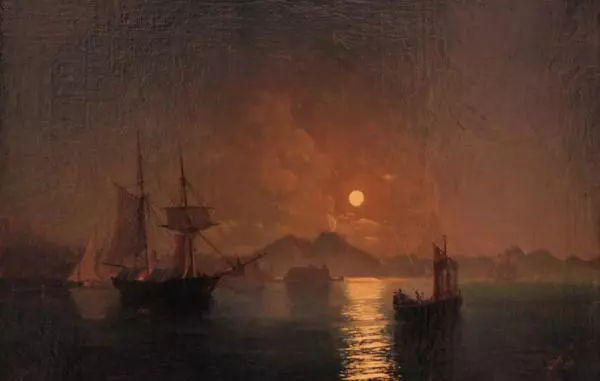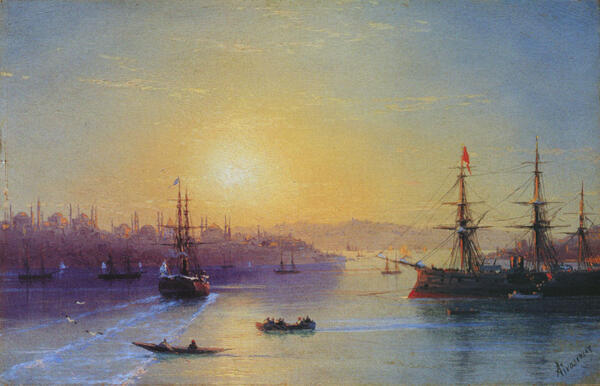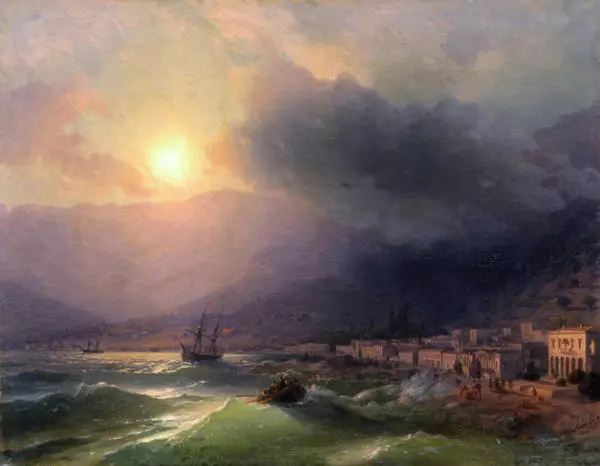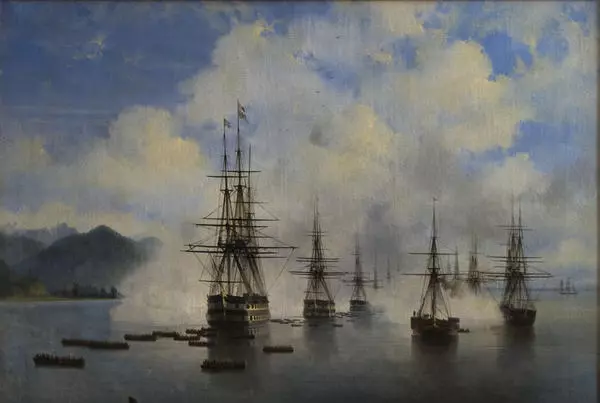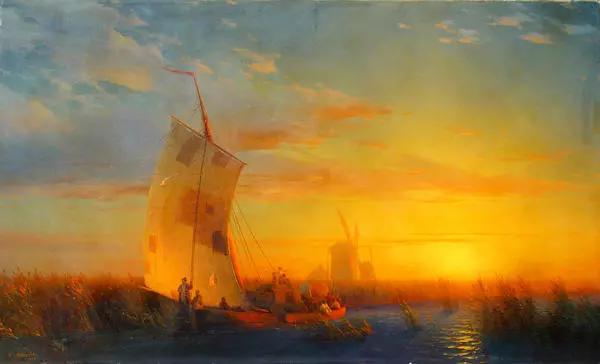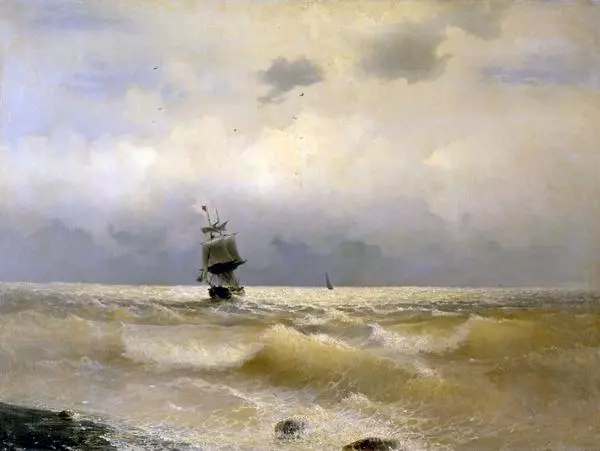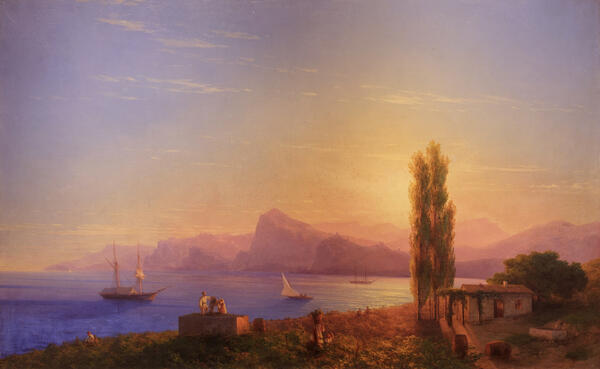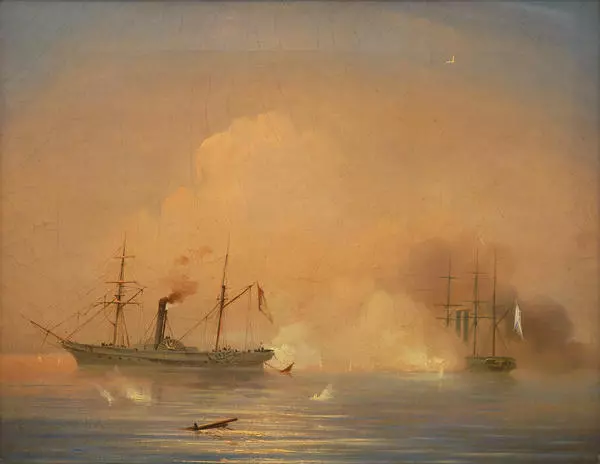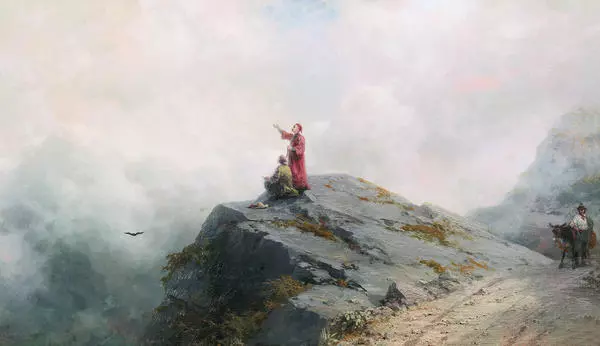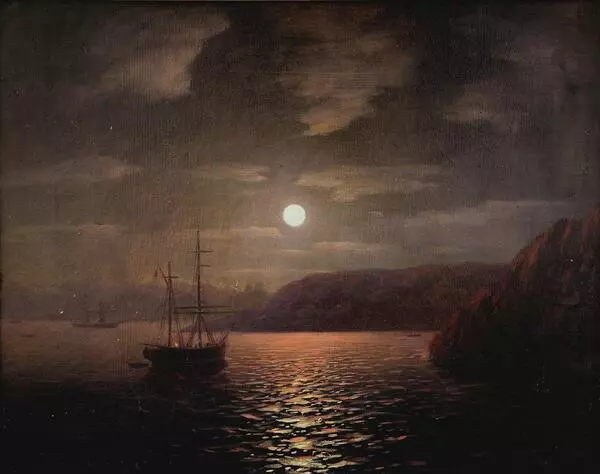Ivan Aivazovsky was born and raised in Feodosia, near the seashore. Yakov Kokh, a local architect, spotted his talent and helped him enter the gymnasium in Simferopol. Later, Johann Ludwig Gross, Aivazovsky’s first drawing teacher, gave him a recommendation for the Imperial Academy of Arts.
After graduating successfully from the Academy, Aivazovsky traveled a lot, served as a painter of the Main Staff of the Russian Navy. The marine theme attracted the artist throughout his life — he loved to depict the sea in its various states.
In “The Ruins of Pompeii” the artist depicts a historical event that happened in 79 BC, when large numbers of people from several cities died under the layers of lava and ash in the eruption of the Italian volcano Vesuvius.
Pliny the Younger, an ancient Roman politician and writer, who witnessed the eruption, left a detailed account of the tragedy in his letters. He described how the earth was enveloped in dense darkness, hot ash fell like heavy rain, and blackened burnt stones plunged from the sky. In the darkness, people were heard moaning, some were praying in fear, but most were shouting that the last eternal night had descended to the world.
Being a romantic artist, Aivazovsky was magnetized by the story of the catastrophe, the powerful forces of nature, the combination of the destructive and the beautiful. He depicted the tragic scene from the sea, which enabled him to describe all the aspects of the disaster — the formidable volcano, the perishing city and the waters illuminated by the ominous light.
In the top right corner of the picture, there is a purple volcanic cone, the city at its foot is flooded with fiery lava. On the left, one can see the mountain slopes, which are illuminated by the abnormal light. The only source of this light is glowing lava. Small rowboats and large sailing ships, overloaded with people, are in a hurry to escape from the dangerous coast into the open sea. The colors of the painting — a combination of alarming red and deep black — create an atmosphere of disaster and panic that is felt by the viewer.
Aivazovsky found appropriate visual means to convey the horror of Pompeii buried in the ash. However, as a romantic artist, he could perceive destruction not only as a tragedy, but also as a spectacular sight, which leaves an indelible impact upon human imagination.
After graduating successfully from the Academy, Aivazovsky traveled a lot, served as a painter of the Main Staff of the Russian Navy. The marine theme attracted the artist throughout his life — he loved to depict the sea in its various states.
In “The Ruins of Pompeii” the artist depicts a historical event that happened in 79 BC, when large numbers of people from several cities died under the layers of lava and ash in the eruption of the Italian volcano Vesuvius.
Pliny the Younger, an ancient Roman politician and writer, who witnessed the eruption, left a detailed account of the tragedy in his letters. He described how the earth was enveloped in dense darkness, hot ash fell like heavy rain, and blackened burnt stones plunged from the sky. In the darkness, people were heard moaning, some were praying in fear, but most were shouting that the last eternal night had descended to the world.
Being a romantic artist, Aivazovsky was magnetized by the story of the catastrophe, the powerful forces of nature, the combination of the destructive and the beautiful. He depicted the tragic scene from the sea, which enabled him to describe all the aspects of the disaster — the formidable volcano, the perishing city and the waters illuminated by the ominous light.
In the top right corner of the picture, there is a purple volcanic cone, the city at its foot is flooded with fiery lava. On the left, one can see the mountain slopes, which are illuminated by the abnormal light. The only source of this light is glowing lava. Small rowboats and large sailing ships, overloaded with people, are in a hurry to escape from the dangerous coast into the open sea. The colors of the painting — a combination of alarming red and deep black — create an atmosphere of disaster and panic that is felt by the viewer.
Aivazovsky found appropriate visual means to convey the horror of Pompeii buried in the ash. However, as a romantic artist, he could perceive destruction not only as a tragedy, but also as a spectacular sight, which leaves an indelible impact upon human imagination.


